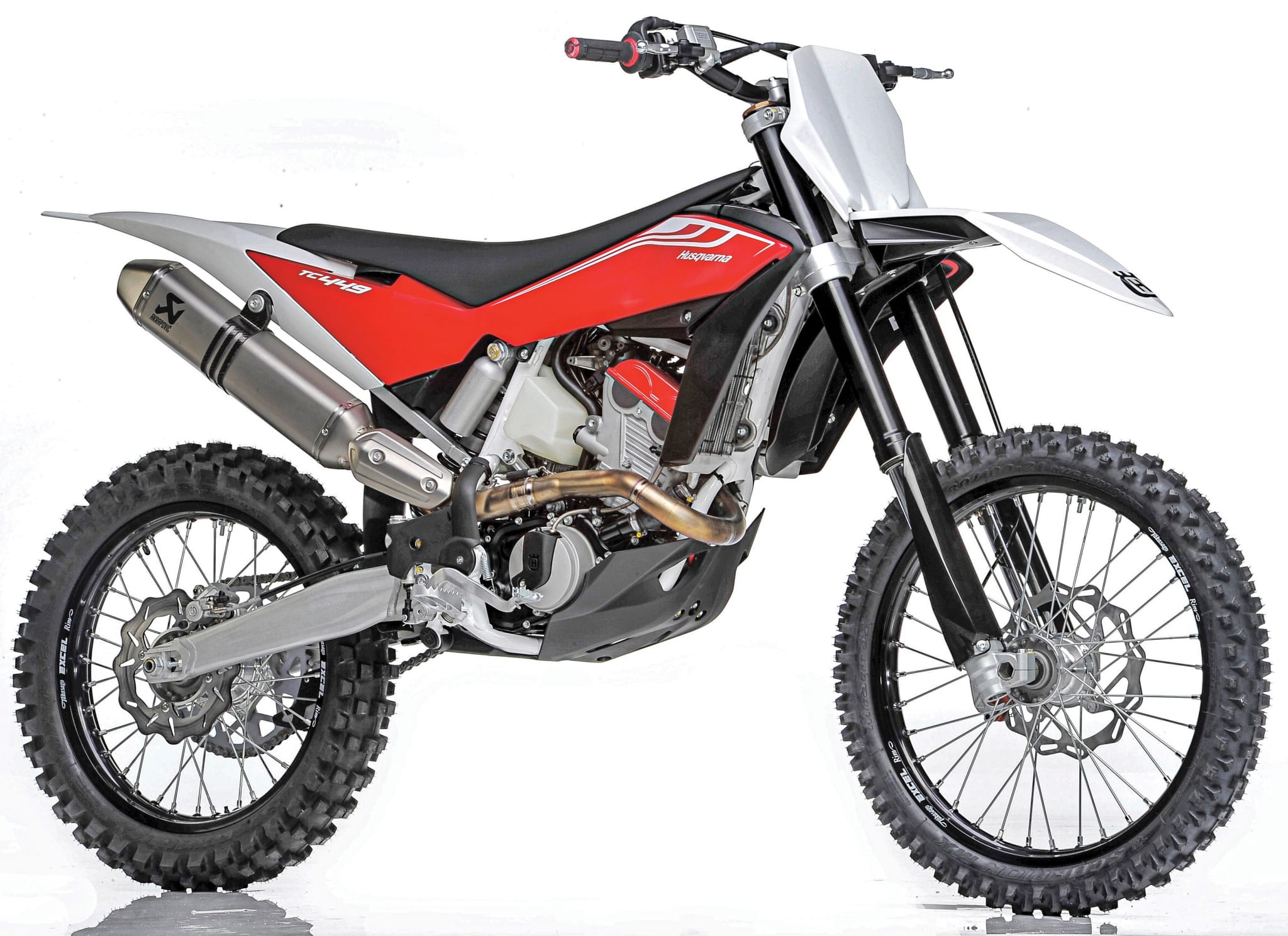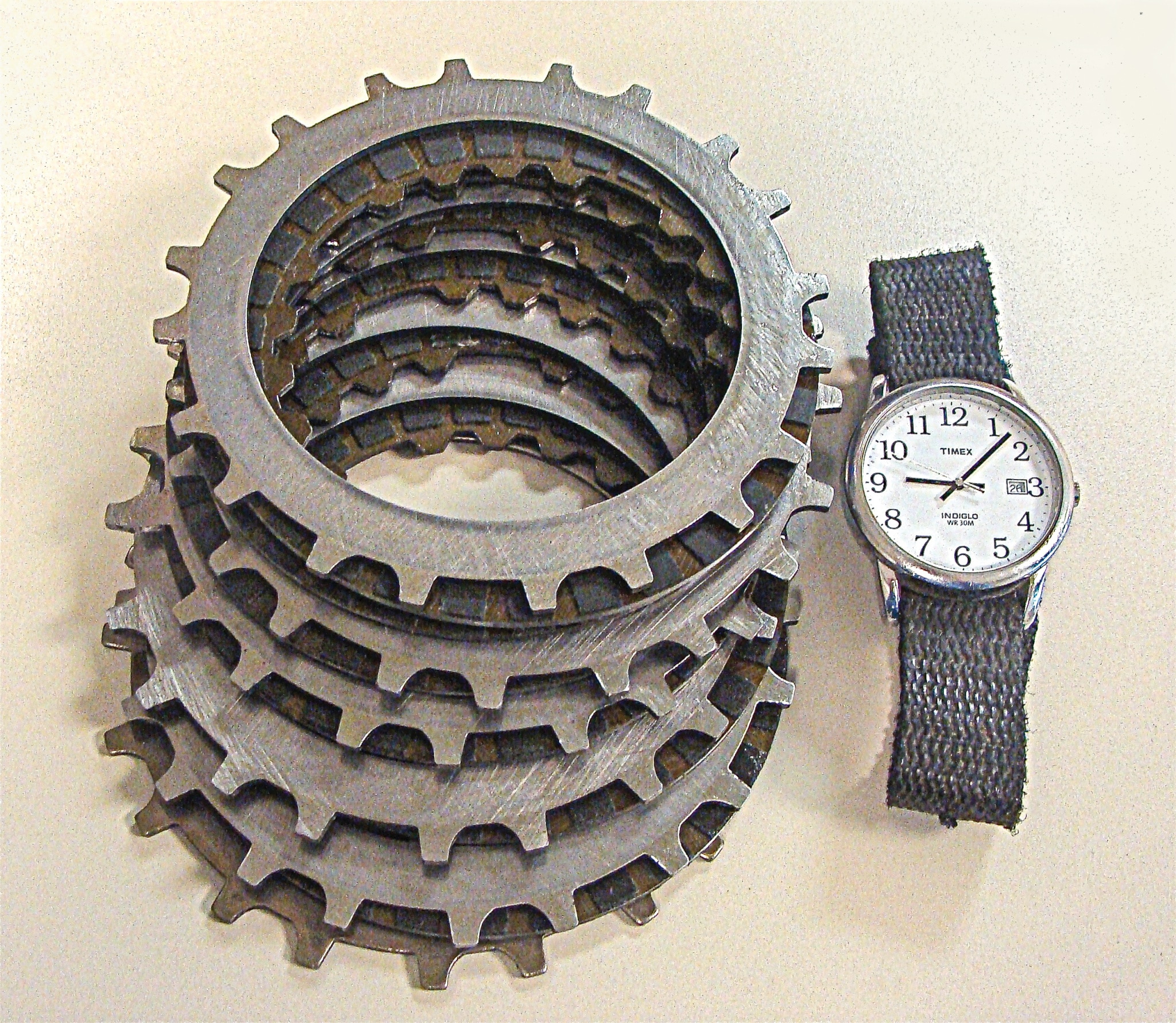MXA RETRO TEST: STRANGE-FOR-THE-TIMES 2011 HUSQVARNA TC449

We get misty-eyed sometimes thinking about past bikes we loved and those that should remain forgotten. We take you on a trip down memory lane with bike tests that got filed away and disregarded in the MXA archives. We reminisce on a piece of moto history that has been resurrected. Here is the test of the 2011 Husqvarna TC449.
Q: FIRST AND FOREMOST, IS THE 2011 TC449 BETTER THAN THE 2010 TC449?
A: Yes it is, but this an apples-and-oranges question. The 2011 Husqvarna TC449 has almost nothing in common with the 2010 TC450—and we mean nothing. The only part that we could find that both bikes shared in common was the front wheel—and even it had been modified for 2011.
Q: IS THE HUSKY TC449 OLD FASHIONED OR CUTTING EDGE?
A: It is beyond cutting edge—this is not your grandpa’s motocross bike, or your father’s bike, or your son’s bike or your next door neighbor’s bike. The TC449 isn’t similar to any motocross bike in recent history. Husqvarna has thrown out the bike-building rule book, ripped it to shreds and lit it on fire. No motocross bike has ever looked like this, worked like this or had as many innovative ideas.
Q: WHAT ARE THE 10 MOST UNIQUE FEATURES OF THE 2011 HUSQVARNA TC449?
A: What isn’t? Here is the list.
(1) Engine. The BMW-designed engine is the first full-size motocross bike to come with a Taiwanese-manufactured engine (from Kymco).
(2) Valve train. The four-valve dual-cam engine drives the exhaust valves with a bucket-over-shim system, while the intake valves are operated by finger-followers.
(3) Clutch. The tiny Belleville washer-controlled Husqvarna clutch is located on the end of the crankshaft.
(4) Gas cap. Fuel goes into the TC449 via a gas cap that is positioned behind the seat.
(5) Gas tanks. That is plural because there are two gas tanks—one under the seat and one behind the cylinder. The second gas tank is translucent so the rider can quickly check if he has any gas left in the tank. The combined volume of both tanks is only 1.98 gallons.
(6) Swingarm pivot. Unique to the Husky and BMW G450X is a concentric swingarm pivot that is located directly over the countershaft sprocket.
(7) Ignition map. Riders can choose between two preprogrammed ignition maps by pressing a handlebar-mounted switch.
(8) Bodywork. It looks more like an airplane fuselage than the typical motocross bike; it makes the KTM’s cladding-style design look commonplace.
(9) Shock linkage. Don’t look under the swingarm to see the rising-rate shock linkage. Instead, look on top of the swingarm.
(10) Seat. The seat can be removed to access the air filter or battery by the twist of a Dzus fastener at the front; no tools required.
IT IS BEYOND CUTTING EDGE—THIS IS NOT YOUR GRANDPA’S MOTOCROSS BIKE, OR YOUR FATHER’S BIKE, OR YOUR SON’S BIKE OR YOUR NEXT DOOR NEIGHBOR’S BIKE. THE TC449 ISN’T SIMILAR TO ANY MOTOCROSS BIKE IN RECENT HISTORY.
Q: IS THE TC449 FUEL INJECTED?
A: Yes. In fact, it uses the same basic EFI setup as every major fuel-injected bike. It has a 46mm Keihin throttle body with two ignition maps. It is equipped with a NGK CR9EKB spark plug and electric starting (via a battery under the seat).
Q: HOW DOES THE CRANK-MOUNTED CLUTCH WORK?
A: The BMW-designed engine is the only modern motocross bike to mount the clutch on the crankshaft, where it spins faster than a typical clutch (almost three times faster). It gets its mechanical advantage from its rotation, not its size. The steel clutch basket holds very small clutch plates, which are controlled by a Belleville-style concentric washer. Because the clutch is so small, there is no room for rubber or spring cushions to absorb shock loads. To handle sudden forces, Husky geared the clutch basket to the gearbox via a torque limiter, which is essentially a metal-to-metal friction disc that slips when the jolt to the clutch exceeds a certain force.

Q: WHAT IS THE BORE AND STROKE OF THE TC449
A: The bore and stroke is 98mm x 59.6mm with a displacement of 449.6cc and a compression ratio of 13:1. There is a 501cc version, called the TC511, that has a 3mm-larger bore.
Q: HOW WOULD WE DESCRIBE THE 2011 TC449 POWERBAND?
A: Torquey. It is the most hooked up of any 450 four-stroke we have ever ridden. Thanks to heavy flywheels, the TC449 can be chugged and lugged with ease. Although it doesn’t have much in the way of top-end over-rev, it gets the job done when the rider short-shifts and uses the torque curve instead of the rpm curve.
Q: IS THE HUSKY TC449 THE FASTEST 450 MADE?
A: No, no, no! Without any over-rev, the TC449’s claim to fame is its ability to grab traction on rock-hard dirt, pull up steep hills with minimal spin, and power out of turns with no need to close your eyes and hang on. It is, however, not only slow-revving but slow in motion.
NO, NO, NO! WITHOUT ANY OVER-REV, THE TC449’S CLAIM TO FAME IS ITS ABILITY TO GRAB TRACTION ON ROCK-HARD DIRT, PULL UP STEEP HILLS WITH MINIMAL SPIN, AND POWER OUT OF TURNS WITH NO NEED TO CLOSE YOUR EYES AND HANG ON.
Q: WHAT IS A COAXIAL TRACTION SYSTEM (CTS)?
A: To tell the truth, we don’t really know. Here are four things we noted:
(1) Close inspection of the TC449 will reveal that the swingarm’s pivot is directly aligned with the center of the countershaft sprocket. This means that the chain’s tension never changes through the arc of the rear swingarm’s travel. That is good because it enhances the life of the chain and sprocket, and perhaps lessens chain snatch to some degree.
(2) The swingarm is slightly longer than the typical swingarm (basically because it is extended forward to line up with the countershaft). Most test riders noticed a tendency for the TC449 to squat under acceleration and lift the front wheel under drive.
(3) Husqvarna makes no claims about reducing chain torque and, in fact, their claims of decreased movement of the rear wheel and minimal rear-wheel squat under acceleration would lead one to believe that CTS increases chain torque instead of reducing it.
(4) No matter how you cut it, Husqvarna has carved their own path (led by the BMW G450X) when it comes to rear suspension, but it is a confusing path of contradictions.
Q: WHAT DID WE HATE?
A: The hate list:
(1) Chassis setup. The rear of the TC449 is much higher than the front. This stinkbug setup means that any test rider under 5-foot-10 had trouble touching the ground.
(2) Weight. Although the German/Italian/Taiwanese engine is small and compact, the overall machine is quite heavy. This seems to be a universal crime in the 450 class, as only the Honda CRF450 comes in under 240 pounds. The Husky’s unique bodywork doesn’t leave a lot of options for picking it up.
(3) Gas cap. The gas cap is behind the seat. You can’t see where the gas level is, because it is very dark under the seat. The warning that the gas tank is almost full is only one-tenth of a second. We spilled gas every time we filled the TC449.
(4) Rear brake pedal. It sticks out, probably because the clutch actuator extends beyond the clutch cover. It was weird.
THE LASTING LEGACY OF THE 2011 TC449 WAS ITS STRANGE-FOR-THE-TIMES PLASTIC, WHICH WAS DISLIKED WITH A PASSION, BUT WENT ON TO SET THE TREND THAT MANY MANUFACTURERS HAVE ADOPTED IN THE ENSUING 13 YEARS.
Q: WHAT DID WE LIKE?
A: The like list:
(1) Clutch. We admit that we haven’t seen a crank-mounted clutch in 35 years (and that was on a Hodaka), but it did work. We credit Brembo’s hydraulics for the consistent feel.
(2) Maps. Husqvarna equipped the TC449 with two maps. They are labeled “soft” and “hard.” Don’t assume that the soft map is for a mellower hit, and the hard map is for more punch. Not so. The soft map is for soft dirt (thus, more hit), and the hard map is for hard dirt (less hit). We tested this bike at several tracks (including some in Italy) and actually did preferred the hard map when the ground was hard and slippery. But, for prepped racetracks, we ran the soft map. You can’t switch maps on the fly. You have to turn the engine off for 10 seconds before flipping the switch.
(3) Brakes. The 260mm front rotor does a great job of hauling the Husky down from speed.



Q: WHAT DO WE REALLY THINK?
A: Husqvarna adds much-needed flavor to the American motocross market, but it is a flavor that most people won’t jell with. From its torque-focused powerband, to its aerospace plastic, to its two gas tanks, to its unusual rear-suspension system, to its BMW roots, to its Taiwanese engine, to its shock linkage on top of the swingarm (instead of under it)—this is a recipe for disaster.
Editor’s note: After this MXA test was published, Husqvarna elected not to import the motocross version of the TC449—this, on top of the total failure of the BMW G450X version of these same ideas, made BMW elect to get out of the dirt bike business and they sold Husqvarna to KTM. The lasting legacy of the 2011 TC449 was its strange-for-the-times plastic, which was disliked with a passion, but went on to set the trend that many manufacturers have adopted in the ensuing 13 years.





Comments are closed.